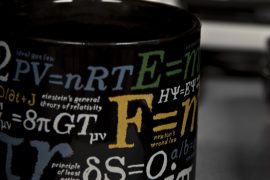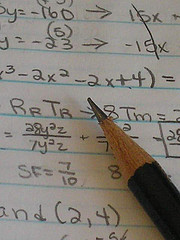I’m vacationing this week in sunny Radford, Virginia,and ike most parts of the United States, the metric system is not used here (to mark distances, anyway). But if you cross the border into another part of the world, there’s little doubt that you’ll be measuring kilometers rather than miles and grams instead of pounds. That’s because most of the world has embraced the metric system. (In fact, only two other countries — Burma and Liberia — have resisted the change along with the U.S.)
Ask any scientist or mathematician: the metric system is infinitely more intuitive and much, much easier to remember and understand. But why? The answer is simple: Base 10. What this means is even simpler: in base 10 the foundational number is 10. Take a look:
10 • 1 = 10
10 • 10 = 100
10 • 100 = 1,000
and so on…
Each time you add a digit in our number system, you are effectively multiplying by 10. That means that 99 is the last two-digit number in base ten, and 999 is the last three-digit number. In fact our entire decimal system is base ten. (But it wasn’t always like that.)
But here’s the thing — you don’t care (and you shouldn’t really care). We are so used to base 10 that we don’t even think about it any more. It’s like knowing how to ride a bicycle or drive a car; once you learn it, you don’t even give it a second thought, but if you’re asked about it, it’s hard (or impossible) to explain.
When you were in school, you probably were asked to convert numbers into different base systems — and this was probably pretty darned confusing. We’re not going to do that here for one simple reason: You don’t need to know how to do this. BUT it is important to know that different base systems are useful in a variety of situations and professions. For example, computers function in base 2 (or binary), which is simply a system of zeros and ones. Computer graphics depend on a hexadecimal system or base 16 (0, 1, 2, 3, 4, 5, 6, 7, 8, 9, A, B, C, D, E, F). Crazy, huh? Even less technical situations depend on a variety of bases — dozens and grosses are base 12 (one dozen is 1 • 12 and one gross is 12 • 12).
Compared to these other bases, base 10 is pretty darned easy, right? And that’s why so many mathy folks don’t understand why our country hasn’t embraced the metric system. Yep, unlike traditional measure systems, the metric system is base ten. Let’s compare:
Traditional system: 12 inches = 1 foot
Metric system: 100 centimeters = 1 meter
Traditional system: 5,280 feet = 1 mile
Metric system: 1,000 meters = 1 kilometers
Just a glance at these conversions and even the most math-phobic person would probably agree: the metric system is much easier to maneuver.
But agreeing that the metric system is easier doesn’t help you with conversions when you’re traveling, does it? On Wednesday, we’ll take a look at those conversions. I’ll show you some really easy ways to estimate the conversions. Because who wants to do math on vacation?
What other bases can you think of? How do you use them in your everyday life? Share your ideas in the comments section.


